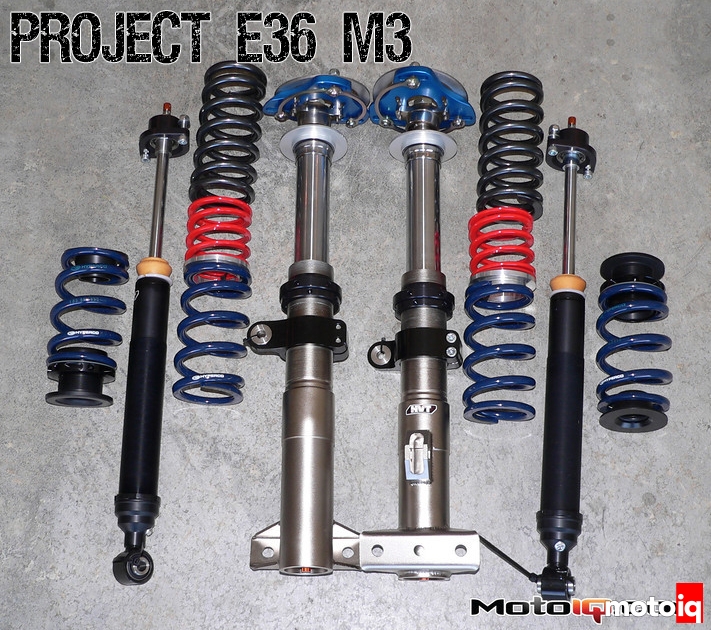,
 Not only a nice view of the serious girth on these struts, but you can also see the upper spring perch, as well as a lower view of the camber/caster plate design and its bulky bearing.
Not only a nice view of the serious girth on these struts, but you can also see the upper spring perch, as well as a lower view of the camber/caster plate design and its bulky bearing. Another view of the underside on the HVT-designed camber plates. With BMWs specifically, people tend to have so many ride height configurations that they offer these with a low stack configuration, or with OEM-like ride height in mind.
Another view of the underside on the HVT-designed camber plates. With BMWs specifically, people tend to have so many ride height configurations that they offer these with a low stack configuration, or with OEM-like ride height in mind. While not a new idea, the markings on top help to take the guess work out of your camber settings.
While not a new idea, the markings on top help to take the guess work out of your camber settings. We haven’t taken it in for an alignment yet, but utilizing the full caster setting means you sacrifice some camber range unless you add clearance to the hole, which is not recommended. In order to run full negative camber, you’d have to reduce caster somewhat. From the eyeball approach, it doesn’t look like we’ll need to do that, as it appears -3.0+ should still be possible, but we’ll know for sure when we get to Suspension Version 1.1 in a couple of weeks.
 We opted for the HVT spherical rear shock mounts with a “top mount” design. This allows for increased travel on the rear shocks, and the spherical bearing allows for better articulation. Plus, they’re a bit over-designed by incorporating the same giant bearing used in the front camber plates.
We opted for the HVT spherical rear shock mounts with a “top mount” design. This allows for increased travel on the rear shocks, and the spherical bearing allows for better articulation. Plus, they’re a bit over-designed by incorporating the same giant bearing used in the front camber plates. The rear shocks offer the same 20 clicks of adjustment as the fronts with a monotube design and a 38mm piston. The 16mm shaft offers a great range on compression and rebound similar to a larger 22mm shaft, but without the weight penalty. The HVT shocks weigh anywhere from 1/2-pound to 2 pounds less due to their size and construction.
The rear shocks offer the same 20 clicks of adjustment as the fronts with a monotube design and a 38mm piston. The 16mm shaft offers a great range on compression and rebound similar to a larger 22mm shaft, but without the weight penalty. The HVT shocks weigh anywhere from 1/2-pound to 2 pounds less due to their size and construction. 


